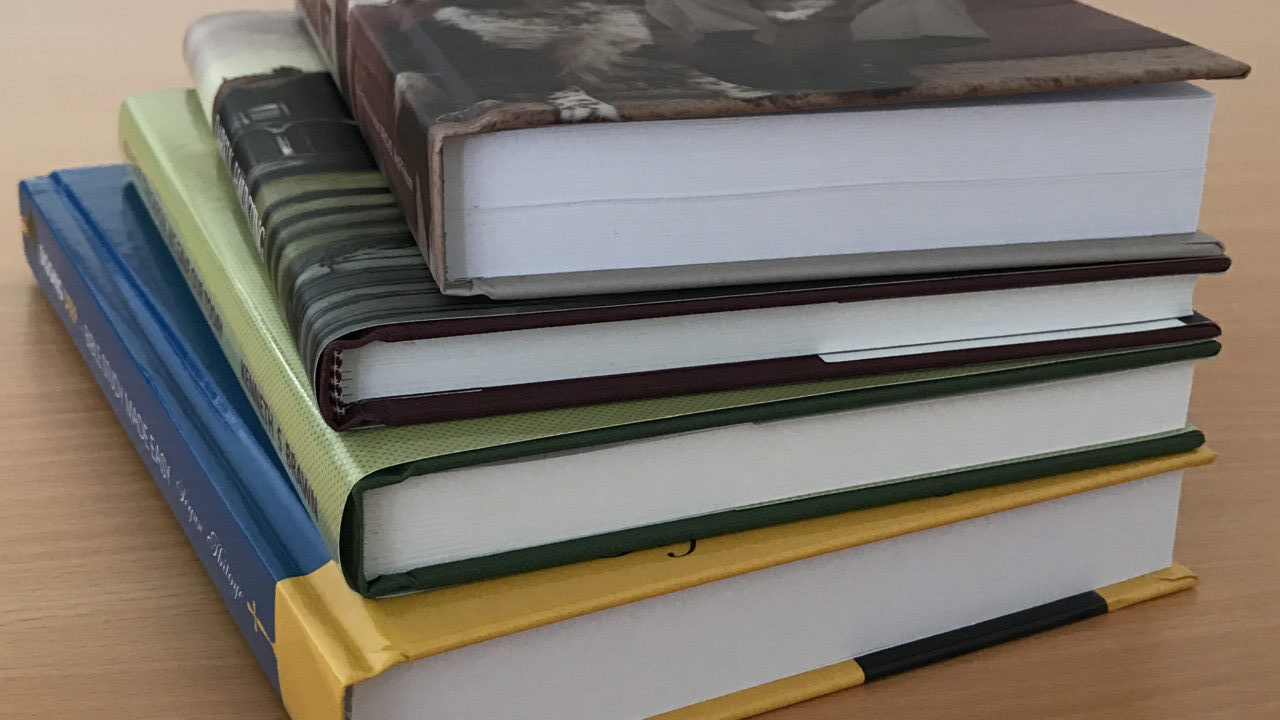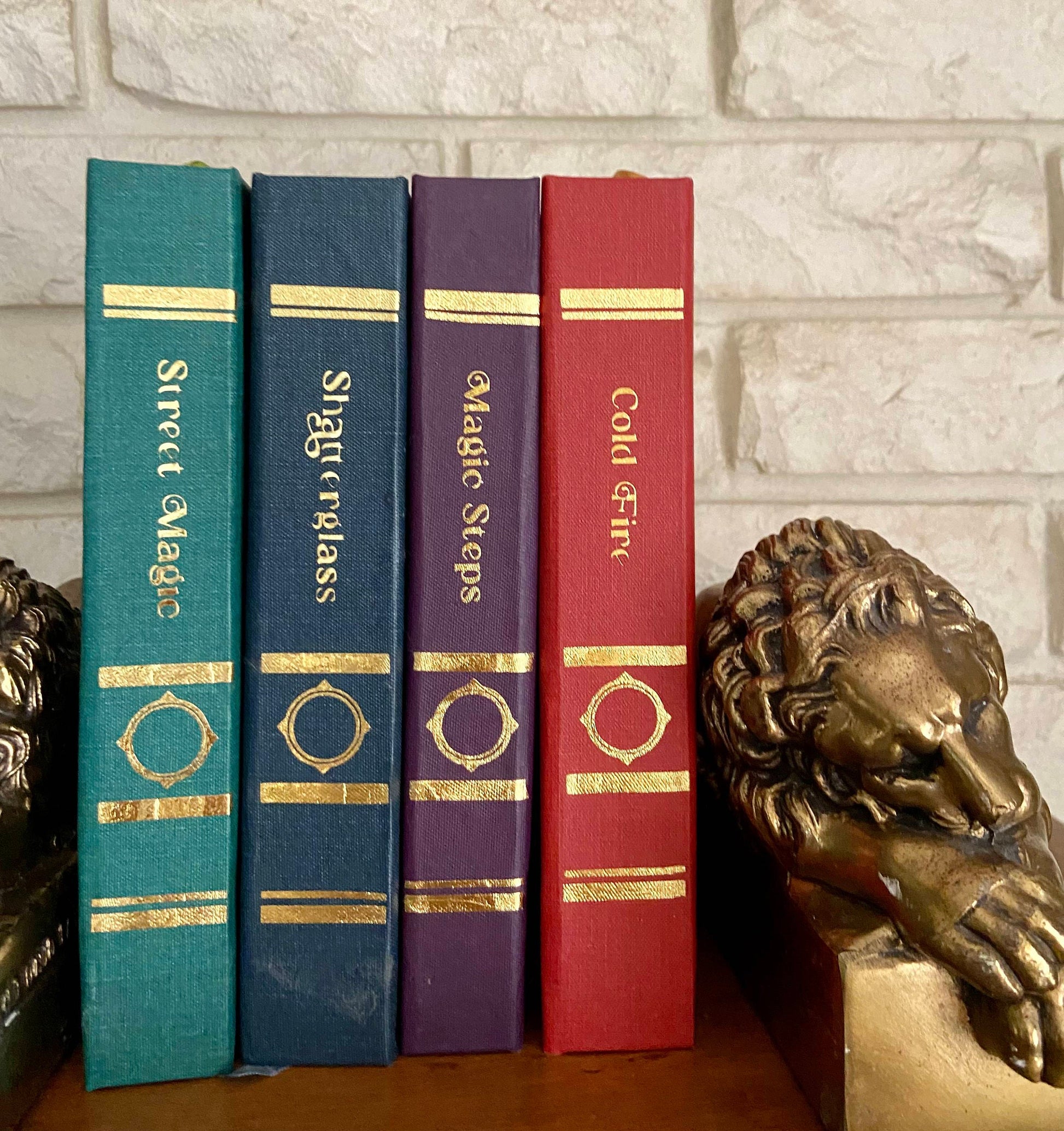Top Offers on Hardcover Books You Shouldn’t Ignore
Top Offers on Hardcover Books You Shouldn’t Ignore
Blog Article
A Comprehensive Guide to the Refine of Hardcover Books Printing
When you start the trip of hardbound publication printing, understanding the whole process is necessary. As you navigate via binding and quality control, you'll locate that every choice influences the publication's general appeal.
Understanding the Hardbound Publication Structure
When you discover the globe of hardcover books, you'll quickly observe that their structure is deliberate and distinct. The outer housing, frequently made of durable cardboard, supplies longevity and security. You'll locate a textile or leather treatment, which not just improves looks however also contributes to guide's longevity. Inside, the endpapers connect the cover to the message block, making certain a smooth interchange.
The message block itself includes numerous signatures, or folded up sheets, sewn with each other for toughness. You'll see that the spine is reinforced, enabling for a smooth lay-flat analysis experience - hardcover books. In addition, guide's weight commonly shares a sense of top quality and durability
Hardcover books typically feature a dust coat, which offers as a marketing device while shielding the cover. Recognizing these elements aids you appreciate the workmanship behind hardbound publications and their distinct charm in the literary world.
Manuscript Prep Work and Editing
Obtaining your manuscript prepared for printing is crucial, and it starts with appropriate formatting standards. You'll require to recognize the modifying process to fine-tune your job and ensure it reverberates with viewers. Plus, mastering checking techniques can aid you catch those pesky errors prior to your publication goes to print.

Manuscript Format Standards
Proper manuscript format is essential for creating a professional-looking hardcover publication. Beginning by selecting a basic font style like Times New Roman or Arial in 12-point size. Use double-spacing throughout the file to improve readability. Set your margins to 1 inch on all sides, offering your message space to breathe. Number your pages in the leading right edge, and include your chapter titles at the beginning of each brand-new section. Use clear headings to indicate sections, and stay clear of excessive format like bold or italics unless essential. Make certain to check your manuscript for uniformity in style, ensuring that everything from spelling to spacing sticks to your chosen guidelines. Following these steps will establish a solid structure for your book.
Modifying Process Fundamentals
Editing your manuscript is a crucial step that can transform it from an outline right into a sleek last product. Begin by reviewing your job critically, focusing on flow, framework, and clearness. Search for incongruities in your narrative, character development, or argumentation. It's useful to take breaks between rounds of modifying to obtain fresh point of views. Do not wait to cut unneeded material or rephrase awkward sentences; this will enhance readability. Take into consideration looking for comments from trusted peers or professional editors who can give important insights. Keep in mind, editing and enhancing isn't nearly taking care of mistakes; it has to do with fine-tuning your voice and ensuring your message reverberates with viewers. Embrace the process, and you'll see your manuscript sparkle.
Proofreading Techniques Overview
Once you have actually brightened your manuscript via modifying, the following action is to guarantee it's complimentary of errors that might distract readers. Review your manuscript out loud-- this assists you listen to awkward wording and area typos. Consider printing your manuscript; reading on paper can expose mistakes that screens miss out on.
Creating the Publication Cover and Inside
When you're creating your book cover and inside, you'll desire to concentrate on necessary style aspects that catch your audience's interest. Selecting the appropriate typography designs and thoroughly choosing colors and images can make all the distinction in sharing your book's motif. Let's discover how these choices can elevate your work and draw in viewers.
Necessary Design Elements
Developing an appealing book cover and a properly designed inside is vital for bring in viewers and enhancing their experience. Pick colors and photos that reflect your publication's theme and state of mind.
For the interior, concentrate on design and white space. A tidy, organized style assists viewers navigate effortlessly. Take into consideration making use of chapter headings and subheadings to lead them via the content. Visual elements, like graphics or illustrations, can additionally improve engagement but should enhance the message, not overwhelm it. Bear in mind, a natural layout throughout your publication promotes an expert appearance that can considerably influence a reader's decision to choose it up.
Choosing Typography Designs
Typography plays an important role in both the publication cover and interior design, forming how viewers view your content. When selecting typography designs, consider your publication's style and target market. A timeless serif typeface may function well for literary fiction, while a contemporary sans-serif could suit a modern story. Warranty readability; your text needs to be easy on the eyes, specifically for longer flows. Take note of font size and line spacing, as these aspects impact general circulation. Mixing typefaces can add rate of interest, but restrict it to 2 or 3 to keep comprehensibility. Assume concerning power structure-- utilize different designs for headings and body text to lead visitors effortlessly with your work. Your typography choices will greatly impact the reader's experience.
Color and Images Choice
Picking the best colors and imagery is important for catching readers' interest and sharing your book's themes. Beginning by considering your style; lively shades may benefit a children's publication, while soft tones suit an enigma book. hardcover books. Usage imagery that reverberates with your content-- photos, illustrations, or abstract styles can enhance your message
Believe regarding the emotions you intend to stimulate. Warm shades can develop enjoyment, while cool shades frequently convey calmness. When making the cover, make sure the imagery does not overwhelm the title and author's these details name; quality is vital. Inside, use constant shade systems that complement your typography. This natural approach not only raises your book's visual however additionally enhances the reader's experience, making it a lot more unforgettable.
Choosing the Right Paper and Products
When picking paper and products for your hardbound publication, it's vital to contemplate exactly how they'll impact the overall look and feeling of your task. Begin by picking the best paper weight; larger supply often shares top quality and toughness, while lighter paper can develop a much more delicate touch. Take into consideration the coating as well; glossy paper enhances images and colors, while matte can offer a sophisticated, underrated look.
Don't neglect about the cover products. Towel, natural leather, or printed paper can set the tone for your book. If your project consists of photos, go with acid-free paper to avoid yellowing gradually. Furthermore, consider the binding materials; making use of top notch sticky assurances your publication lasts.
Inevitably, the options you make here mirror your vision, so make the effort to example various materials (hardcover books). Your options will certainly assist produce a publication that's not just aesthetically attractive however useful and also sturdy
The Printing Process: Techniques and Technologies
A selection of printing techniques and technologies can bring your hardcover book to life, each offering special advantages. Digital printing is a preferred option for brief runs, enabling fast turnaround and cost-effective remedies. It's ideal when you require to print smaller quantities without sacrificing high quality. On the various other hand, countered printing master producing huge volumes, providing regular and top notch outcomes. This technique is ideal for substantial magazines where color accuracy and fine details matter.
Understanding these methods helps you make notified decisions, ensuring your hardbound book not just looks fantastic yet additionally satisfies your production requires effectively. Pick the appropriate method to boost your book's charm and influence.
Binding Approaches for Hardbound Books
A number of binding methods can transform your hardcover book right into a sturdy and appealing item. One prominent alternative is the instance binding approach, where the web pages are stitched together and after that affixed to a stiff cover. This gives excellent longevity and a specialist look. Another technique is the excellent binding, which makes use of glue to hold the web pages with each other, enabling a sleek spinal column but much less longevity compared to case binding.
You could likewise think about spiral binding, which allows your publication to lay flat, making it excellent for manuals or workbooks. Each binding approach has its advantages and fits various requirements, so think concerning your book's objective and target market when picking the ideal alternative for your task.
Quality Assurance and Last Touches
After choosing the right binding technique for your hardbound publication, quality control comes to be necessary to confirm your final product fulfills your expectations. Start by inspecting the printed pages for any kind of mistakes or inconsistencies in shade and design. You don't intend to miss any kind of typos or misprints that could influence your readers' experience.
Following, inspect the binding stability. Validate the pages are securely attached and that the spinal column is strong. A well-bound publication not just looks this page professional but also feels durable in your hands.
Additionally, pay attention to the cover. Try to find any scuff marks or imbalances in the artwork. Make certain they're applied consistently across all duplicates. if you've decided for special coatings like embossing or foil stamping.
Finally, carry out a comprehensive assessment of the whole batch prior to relocating to circulation. In this manner, you can confirm that every publication mirrors your navigate to this website high standards.
Often Asked Questions
For how long Does the Hardbound Book Printing Process Generally Take?

What Is the Minimum Order Quantity for Hardbound Books?
The minimum order quantity for hardbound books normally begin around 100 duplicates, however it can vary based upon the printer. You ought to check with your picked printing service for their certain demands and prices.

Can I Publish Hardbound Books in Custom Sizes?
Yes, you can publish hardbound publications in customized dimensions. Several printing solutions provide adaptability with dimensions, allowing you to pick a layout that fits your job. Simply confirm the requirements before putting your order.
Are There Eco-Friendly Options for Hardcover Publication Printing?
Yes, you can locate environment-friendly options for hardbound book printing. Numerous business utilize sustainable inks and recycled materials. Just ask your printer concerning their eco-friendly techniques to assure your job straightens with your environmental worths.
What Are the Costs Connected With Hardcover Book Printing?
When considering hardbound book printing prices, you'll require to variable in products, style, and printing approaches. Extra expenses like delivery and binding can also impact your overall spending plan, so strategy as necessary for your job.
When you begin the journey of hardbound book printing, understanding the entire procedure is necessary.A variety of printing techniques and modern technologies can bring your hardbound publication to life, each offering unique benefits. Just how Long Does the Hardcover Book Printing Refine Generally Take?
The hardcover book printing process generally takes around 2 to 6 weeks.Yes, you can discover eco-friendly options for hardbound publication printing.
Report this page